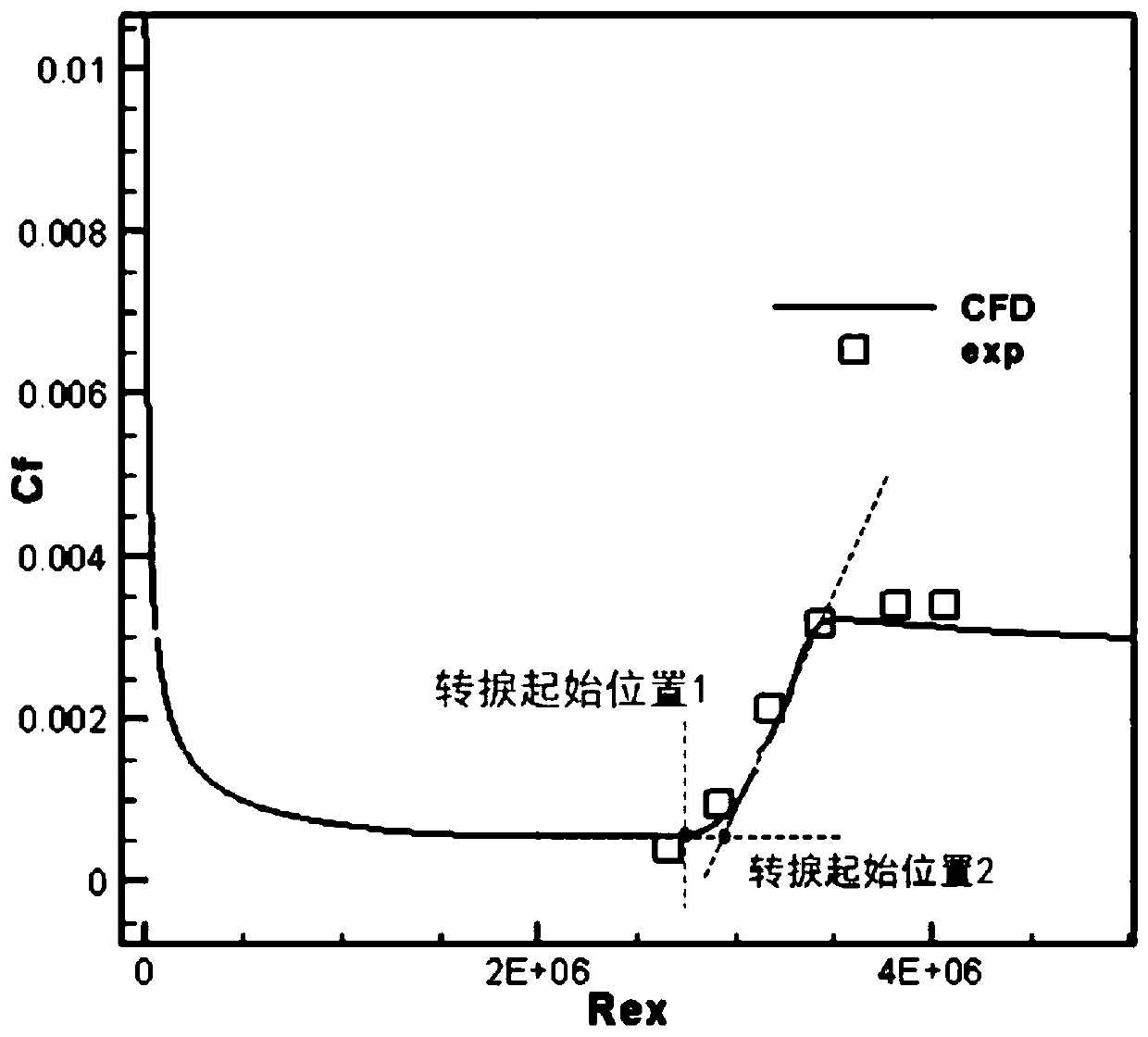Hypersonic transverse flow transition prediction method considering surface roughness effect
A surface roughness, hypersonic technology, used in the testing, measuring devices, instruments, etc. of machine/structural components, which can solve the problems of not considering the influence of surface roughness, unpredictable cross-flow transition, and cross-flow not starting.
- Summary
- Abstract
- Description
- Claims
- Application Information
AI Technical Summary
Problems solved by technology
Method used
Image
Examples
Embodiment 1
[0056] The present invention discloses a hypersonic transverse flow transition prediction method considering the effect of surface roughness. The hypersonic transverse flow transition prediction method at least includes the following steps:
[0057] S1: Let the critical cross-flow Reynolds number and surface roughness satisfy the logarithmic relationship, specifically:
[0058]
[0059] Step S1 gives the transition criterion based on the experimental data of hypersonic cross flow.
[0060] S2: Based on the existing hypersonic wind tunnel experimental data, CFD laminar flow solution is used to obtain the transition critical momentum thickness Reynolds number of different roughness under hypersonic conditions, and the least square method is used to solve the relationship coefficients to obtain the criterion relationship:
[0061]
[0062] Where Re SCF Is the steady cross-flow Reynolds number, h is the surface roughness, θt is the momentum thickness of the boundary layer (obtained by ite...
PUM
 Login to View More
Login to View More Abstract
Description
Claims
Application Information
 Login to View More
Login to View More - R&D
- Intellectual Property
- Life Sciences
- Materials
- Tech Scout
- Unparalleled Data Quality
- Higher Quality Content
- 60% Fewer Hallucinations
Browse by: Latest US Patents, China's latest patents, Technical Efficacy Thesaurus, Application Domain, Technology Topic, Popular Technical Reports.
© 2025 PatSnap. All rights reserved.Legal|Privacy policy|Modern Slavery Act Transparency Statement|Sitemap|About US| Contact US: help@patsnap.com



